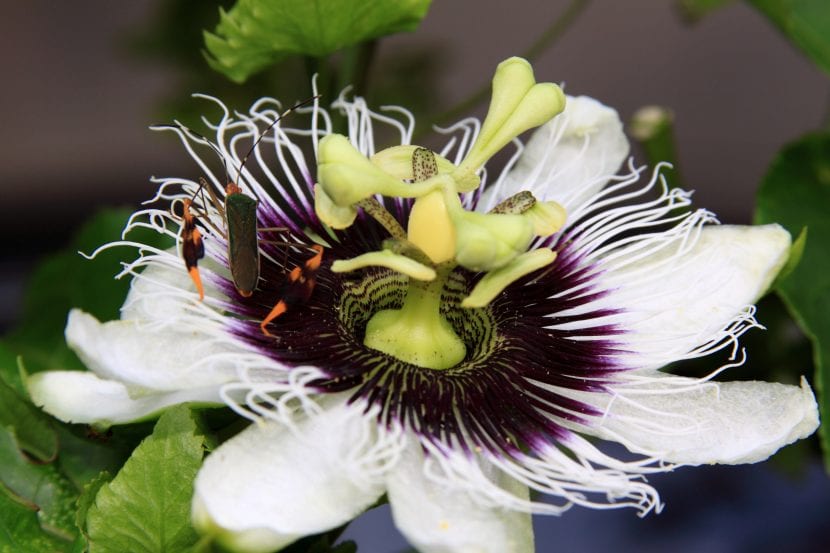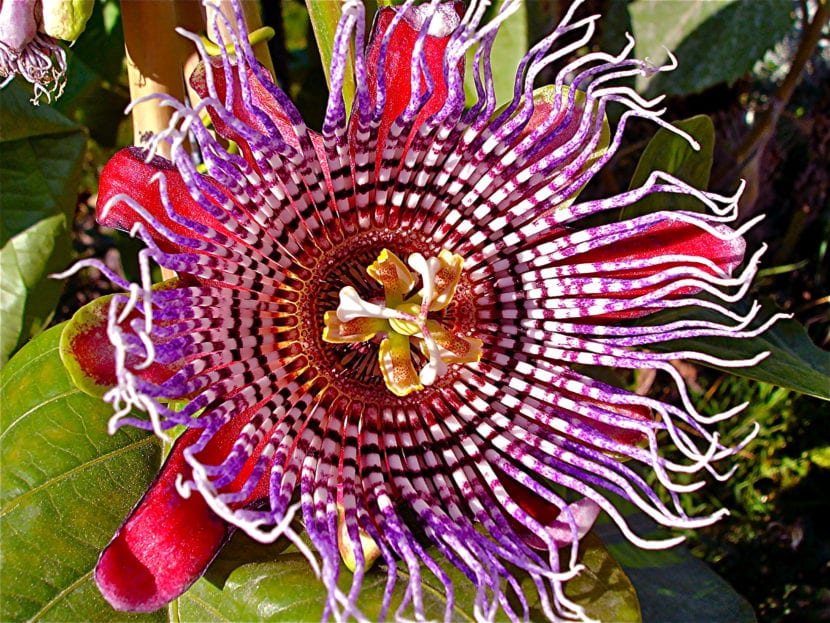
Passiflora x decaisneana
If there is a vine that produces truly spectacular flowers, that is without a doubt the Passiflora. Known as "Passion Flower", they are very fast growing plants that need very little care. In fact, we can grow them both indoors and in the garden, so… why not buy a specimen?
What's more, they are medicinal plants and produce edible fruitsSo it's interesting to meet them, don't you think?
Origin and characteristics of Passiflora
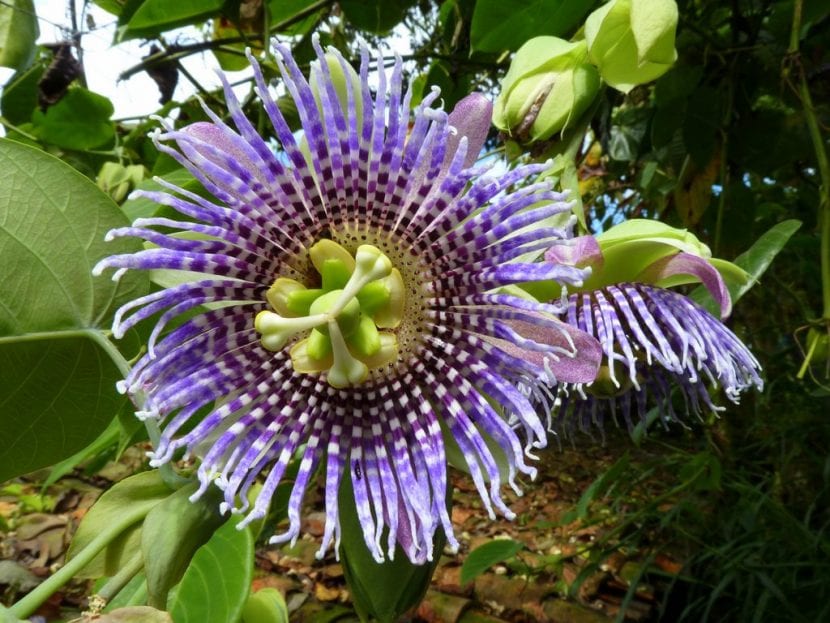
Passiflora ligularis
The species of the genus Passiflora are native to tropical and subtropical America, Asia, Australia and Oceania. They are lianas or vines that can grow up to 20 meters in height, or have a semi-trailing development. The leaves can be glabrous to densely pubescent arising from a very fine stem. From this, the tendrils also arise, which can be simple, straight, circinate or spiral.
The inflorescences are very peculiar: the peduncles have three bracts that can be found near or far from the flower. Are they can be red, bluish, or white depending on the species and / or cultivar. Once they are pollinated, the fruit begins to ripen, which is similar in size to a plum and inside which are the seeds.
Types of Passiflora
The genus is made up of some 360 accepted species, of which the following are the most popular:
Alata passionflower
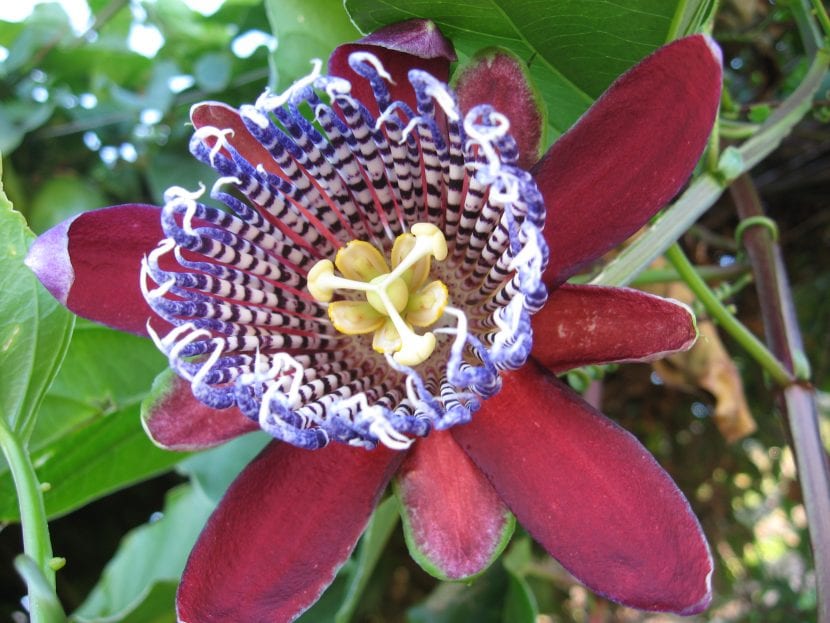
Known as ouvaca or red star, it is a vine native to the Brazilian Amazon region. It has oval or oblong leaves 10-15cm long by 1-10cm wide. It produces flowers in late summer or early fall, and they are very fragrant. The fruit is edible, and in addition resists weak frosts down to -2ºC.
Passiflora caerulea
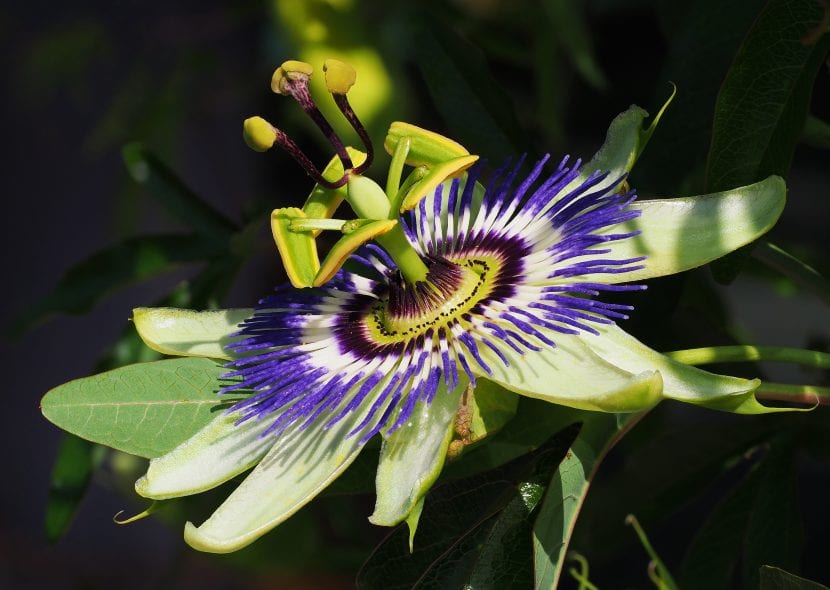
It is the best known. Called passion fruit, passion flower, blue passionflower or burucuyá, it is native to South America. It can reach 20 meters in height, making it perfect for covering dry walls, walls or tree trunks. Its leaves are alternate, palmate, with a size of 5-10cm in both width and length. It blooms in spring and summer, although it can do so all year round if the weather is warm. Its fruit is also edible, and it resists frosts down to -8ºC.
Passiflora
Known as passion fruit, passionflower, parcha, parchita, chinola or mburucuyá, it is a plant native to Central and South America that can reach 9 meters in length. It has a rigid and woody stem, covered by large alternate leaves. It blooms especially in spring, revealing the beauty of its fragrant flowers. The fruit is an oval or round berry, between 4 and 10cm in diameter, edible. Resists up to -2ºC for a short time.
Passiflora vitifolia
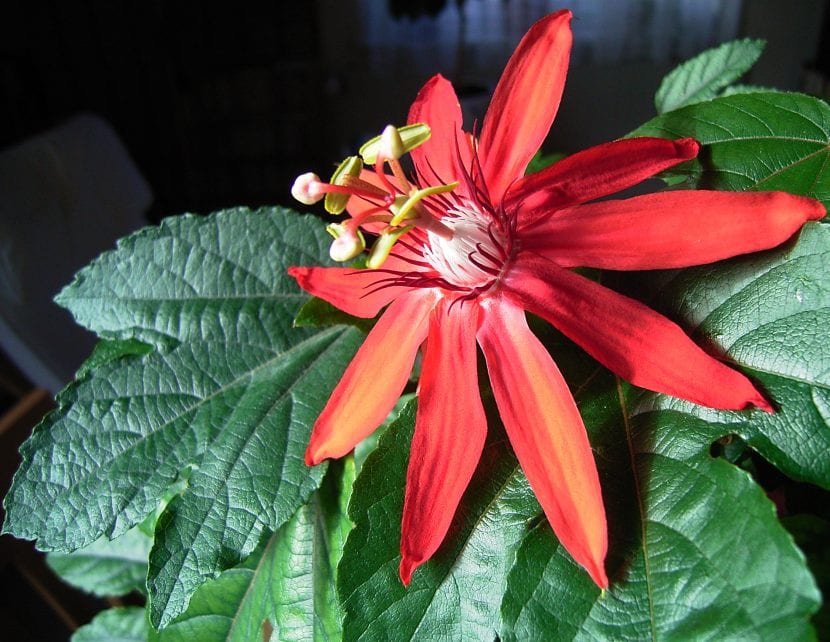
Known as scented passionflower or granadilla de monte, it is a vine native to Central America that reaches 8 meters of length. The leaves are alternate, partially divided into three lobes. The flowers are large, 12cm on average, of an intense red color. The fruit is ovoid in shape, measures about 5-8cm long by 3-4cm in diameter and is edible. Does not resist the cold, perhaps down to -1ºC for a short time.
How are they cared for?
If you would like to get a copy, do not hesitate: provide these cares to be able to enjoy it to the fullest:
Location
- Body exterior:: in semi-shadow. You cannot get much direct sunlight because it could burn you.
- Interior: in a very bright room, away from drafts.
Soil or substrate
Not demanding. Now, if it is going to be grown in a pot, we recommend putting a first layer of volcanic clay or arlite to improve drainage.
Irrigation
During the summer it has to be frequent, especially if you live in a very hot area such as the Mediterranean region. The frequency of irrigation can be as follows: up to 4 times a week in warmer months, and up to 2 a week the rest of the year.
Subscriber
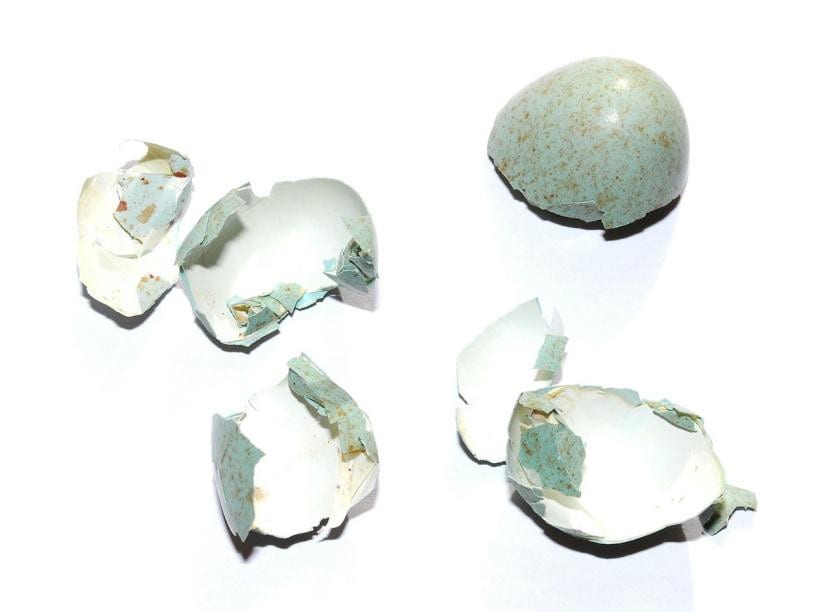
Being a plant with edible fruits, it must be paid with Organic fertilizers. So that, if it is going to be on land, you can add egg and banana shells, tea bags, or even vegetables that can no longer be eaten. But if it is going to be in a pot, the ideal will be to fertilize it with liquid fertilizers, such as guano or humus, following the indications specified on the product packaging.
Planting or transplanting time
The best time to plant it in the garden or transplant it is in spring, when the temperature rises above 15ºC. We recommend putting a guide on it so that it "knows" where to climb.
Pruning
After flowering, Stems that have flowered can be cut up to 3 buds. The buds are the bumps from which the leaves emerge.
Pests
- Mealybugs: they can be cotton wool or "limpet" type. They can be removed with diatomaceous earth (the dose is 30g per liter of water), or by hand with a brush dipped in pharmacy alcohol.
- Aphids: they are parasites of about 0,5cm in length of green, yellow or brown color that settle on the flowers and leaves to feed on them. The best way to control them is by placing yellow colored traps near the plant.
Multiplication
- Seeds: in early spring, they can be sown in a seedbed with universal growing medium. They will germinate after 15-20 days.
- Cuttings: In spring, pieces of stem that have three leaves can be cut and planted in a pot with black peat. They will take root in 20-25 days.
Rusticity
Most species they are very sensitive to cold, being the least the Passiflora caerulea, which can resist weak frosts.
What are Passiflora used for?

Ornamental
Passiflora are plants that are used mainly as ornamentals. Its spectacular and aromatic inflorescences are of unparalleled beauty. In addition, they are very easy to care for and grow fast so They are used a lot to cover walls, walls, etc..
Nutritional
The fruit is edible and it can be used to make jams, as an ingredient in salads, or even as a dessert.
Medicinal
There are several medicinal uses that it is given, among them:
- Relieve premenstrual symptoms
- Reduce pain caused by intestinal colic
- Reduce blood pressure levels
- As a treatment for hemorrhoids
- Using poultices to heal wounds, burns or inflammations

Passiflora 'Soi Fah'
Do you dare to have a Passiflora at home?
